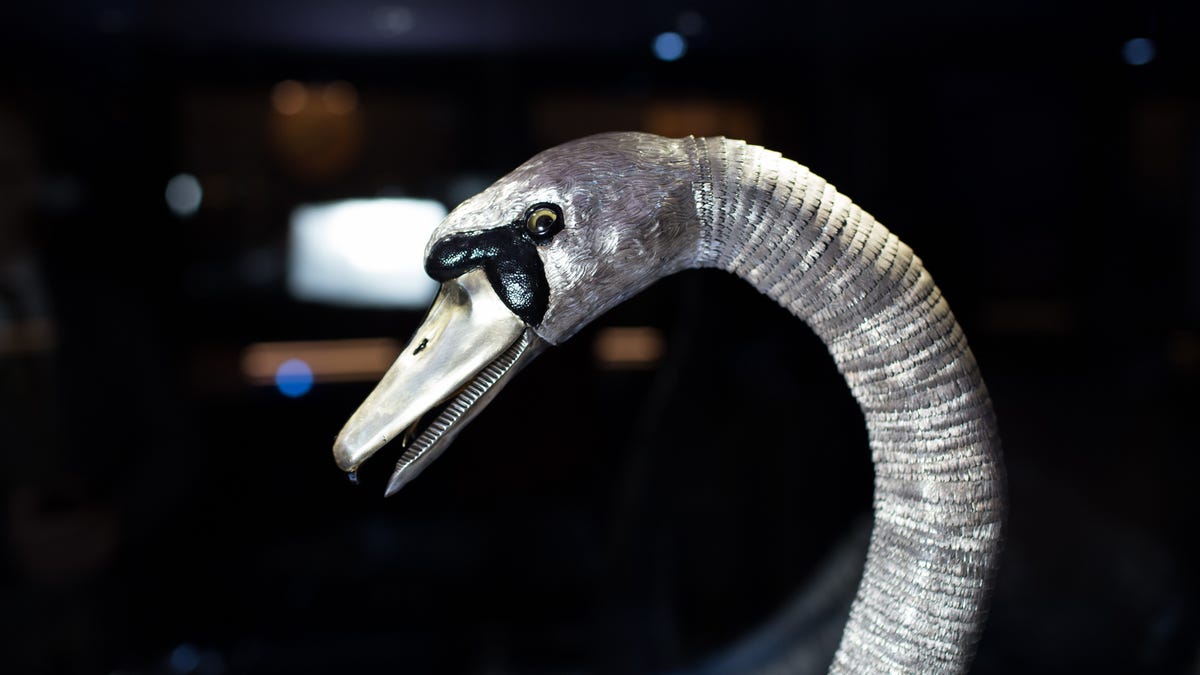Terminators, swans and robo-monks: Here's 500 years of robots
An exhibition in London's Science Museum offers up a collection of more than 100 humanoid robots from real and cinematic worlds.

In the heart of London's Science Museum lurks a band of creatures so shiny, so expressive and so awkward in gesture and gait that merely observing them will take you on a journey from valley of the dolls to the uncanny valley and back again.
They are the robots, and there are over 100 of them all contained in one space for the museum's latest exhibition, which opens to the public on Wednesday.
"Robots" tells a story spanning 500 years, thanks to a ragtag collection of droids that includes an automaton monk made in 1560 alongside a RoboThespian created in 2016. Also included are a couple of famous faces from science fiction, including a replica of Maria from Fritz Lang's 1927 film "Metropolis" and the original T-800 endoskeleton robot used in "Terminator Salvation."
Before you freak out at the thought of the robot uprising these bots could easily plot together, take comfort in the knowledge that very few of them have any built-in artificial intelligence. Plus, the museum locks its doors very tight at night (we presume).
Robots have long provided fodder for grand sci-fi tales, but they're very much a part of our reality now. Robotics took center stage at CES 2017 with a huge array of droids on display. A panel hosted by CNET at the show focused on the notion that many people may soon have their first ever encounters with robots.
"One of my predictions for 2017 is that twice as many people are going to interact with robots as they did in 2016," Steve Cousins, CEO and founder of robotics company Savioke, said at the panel.
Back in the early 1900s they liked their robots big and bulky.
The definition of what makes a robot a robot can vary wildly among experts and technologists, taking in everything from the most basic mechanical toys to the most sophisticated drones and even self-driving cars. That's why Ben Russell, lead curator of the exhibition, chose to keep the focus tightly on our closest relatives in the world of tech: the humanoid robots.
"We could fill a space four times bigger with robots ... so we had to find a way of filtering things down," Russell said in an interview Tuesday. "I realized early on that it is the humanoids that most fascinate people because they're so much like us, so I thought let's go for those guys."
Kodomoroid is a Japanese newsreader, who just so happens to be a robot.
The only robot not to fit this mold is also one of the most impressive pieces on display. A mechanical silver swan on loan from the Bowes Museum will remain a part of the exhibition until March 23. The wind-up bird dates back to around 1773 and performs a 37-second routine to music in which it preens its own neck before plucking a fish from a flowing filigree stream and swallowing it whole.
Mark Twain once viewed and wrote about the same swan.
The exhibition was five-and-a-half years in the making and will run in London until September 3. Following that, it will travel around the UK, starting in Manchester, before moving to Newcastle and then Edinburgh.
Ian Blatchford, director of the Science Museum, said the exhibition will go on to tour internationally until at least 2021, though the specific cities and museums it will visit are yet to be finalized.
CNET Magazine: Check out a sampling of the stories you'll find in CNET's newsstand edition.
Batteries Not Included: The CNET team shares experiences that remind us why tech stuff is cool.

